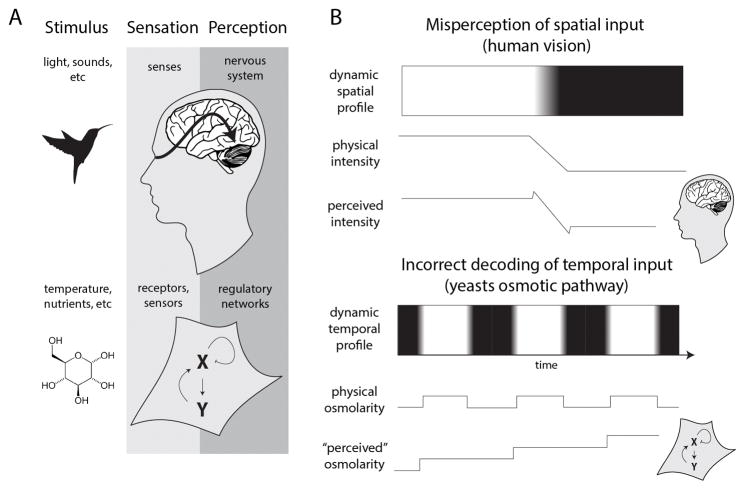Figure 1.
Analogy between organismal sensory-perception and cellular responses. A: Sensory-perception in humans is not a passive process of registering external stimuli but is actively shaped by learning, memory, and expectation. This intertwined sensation and perception structure allows internal cognitive models to enrich the information content extracted from external inputs and to greatly improve the organism’s response. We propose that the cellular response is an active process of information decoding that is analogous to sensory-perception. B: Incorrect decoding of dynamic inputs reflects misperception of external stimuli due to the underlying information processing network. Visual illusions (such as Mach bands) highlight the constraints inherent to processing of spatial patterns (top panel). The Illusion arises from lateral inhibition and excitation, bands are the illusory bright and dark lines to the left and right of the luminance gradient that connects the two uniform regions [4]. Decoding of temporal patterns of stimuli highlight the potential for “misperceptions” at the cellular level (lower panel). Yeast cells incorrectly interpret osmotic oscillation as a stepwise increase in osmolarity [17].

